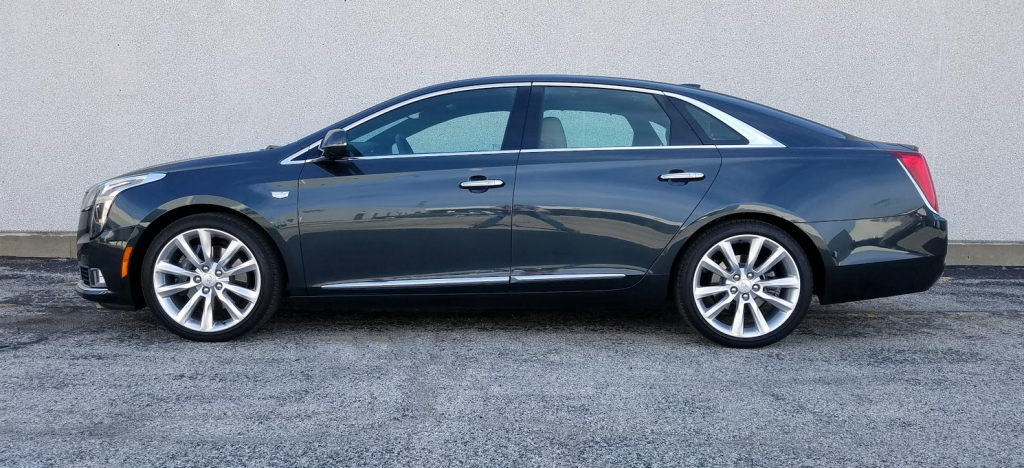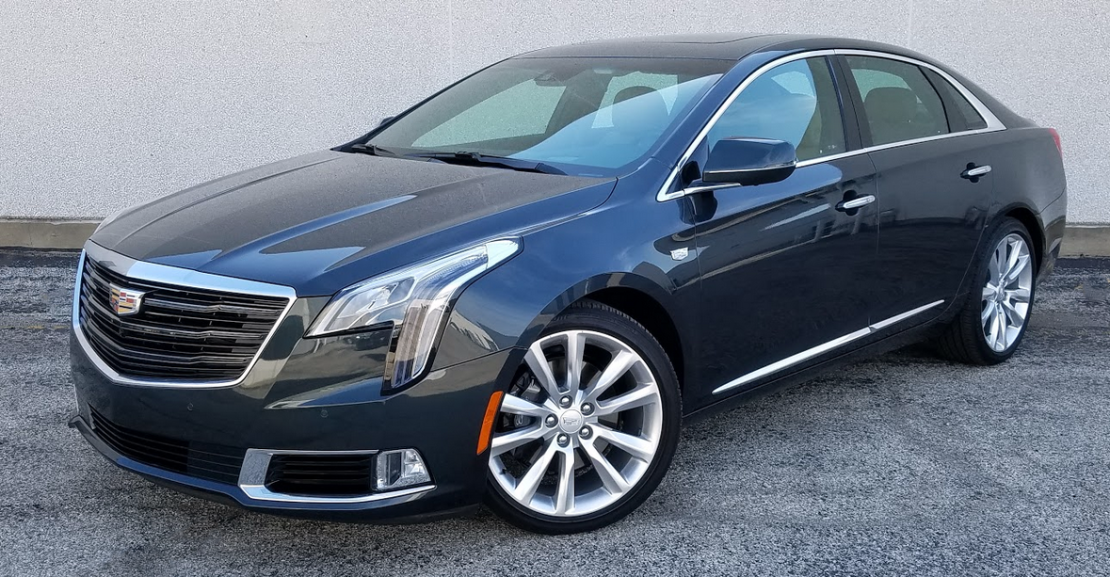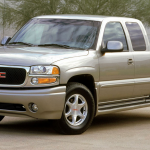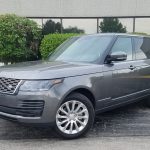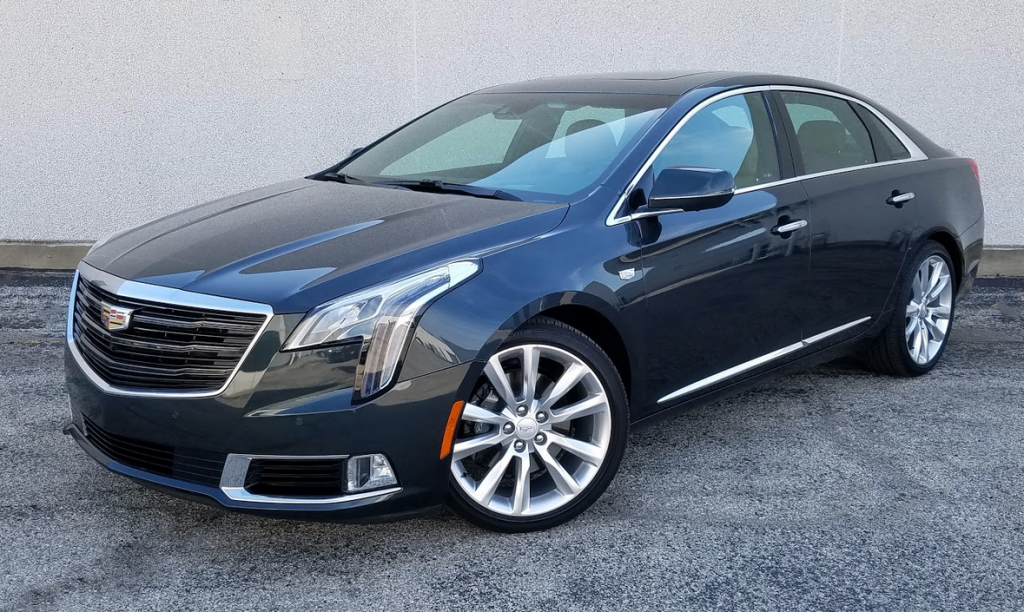
 2018 Cadillac XTS Platinum V-Sport AWD
2018 Cadillac XTS Platinum V-Sport AWD
Class: Premium Large Car
Miles driven: 354
Fuel used: 21.1 gallons
Real-world fuel economy: 16.4 mpg
| CG Report Card | |
|---|---|
| Room and Comfort | A- |
| Power and Performance | B+ |
| Fit and Finish | A |
| Fuel Economy | B- |
| Value | B |
| Report-card grades are derived from a consensus of test-driver evaluations. All grades are versus other vehicles in the same class. Value grade is for specific trim level evaluated, and may not reflect Consumer Guide's impressions of the entire model lineup. | |
| Big & Tall Comfort | |
| Big Guy | A |
| Tall Guy | B |
| Big & Tall comfort ratings are for front seats only. "Big" rating based on male tester weighing approximately 350 pounds, "Tall" rating based on 6'6"-tall male tester. | |
Driving mix: 65% city, 35% highway
EPA-estimated fuel economy: 16/23/18 (city, highway, combined)
Base price: $71,695 (not including $995 destination charge)
Options on test vehicle: Compact spare tire ($350)
Price as tested: $73,040
Quick Hits
The great: Exceptionally quiet, luxuriously appointed cabin
The good: Smooth ride, excellent power in highway driving
The not so good: Finicky infotainment system, thirsty for premium gasoline
More XTS price and availability information
John Biel
If you’re a believer in the benefits of choice when selecting goods or services, then you will probably appreciate that Cadillac has two large cars from which to choose. That is, if you’re a believer in the benefits of large cars.
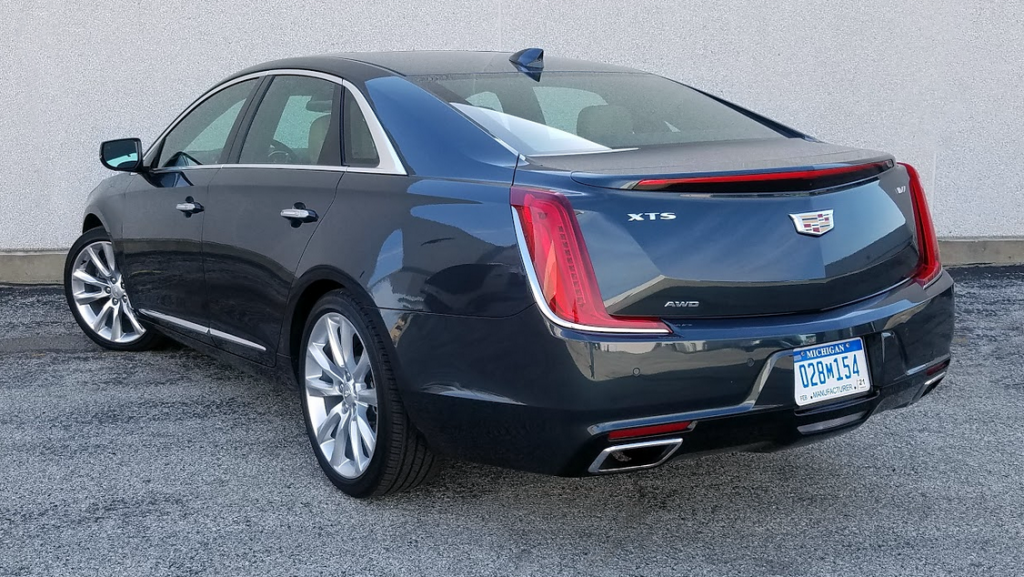
In 2018 Caddy fills the luxury space quite thoroughly with both the CT6 and the XTS that is the subject of this test by Consumer Guide® editors. The CT6 is the newer and larger of the two; the XTS is the more powerful entry as a Platinum V-Sport like the one that CG tested.
Stacking the numbers side by side yields some interesting comparisons of these Cadillacs. Since the XTS test car was a top-of-the-line Platinum V-Sport with a $72,690 base price (with delivery), we lined it up against an $89,290 CT6 3.0 Twin Turbo Platinum. Both cars feature all-wheel drive and a twin-turbocharged V6.
Test Drive: 2017 Lincoln Continental
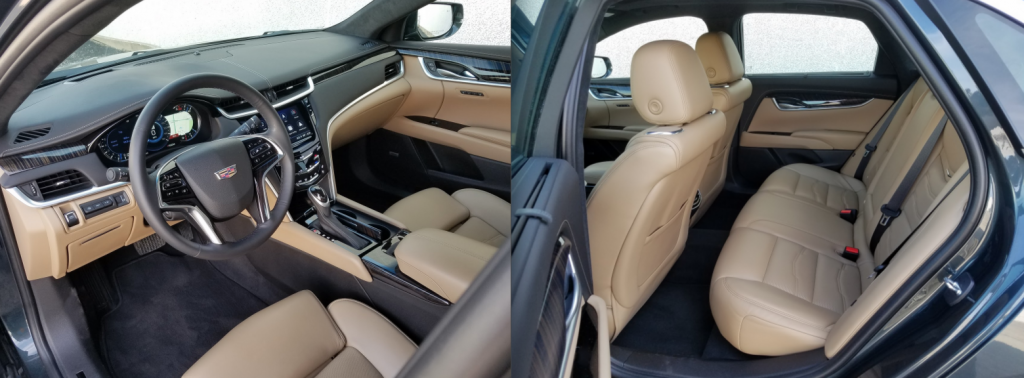
The CT6 has 10.4 more inches of wheelbase than the 111.7-inch XTS, and a 3.2-inch edge on the XTS’s 200.9 overall inches. The CT6 is a little wider too. While the bigger car has clear advantages in front-seat room (legroom is 4.3 inches greater), the smaller one very nearly matches it in rear-seat head- and legroom—and even has 0.8-inch more hiproom. Plus, the XTS, which is based on a front-wheel-drive platform, has 18 cubic feet of trunk space, while the rear-drive-centric CT6 holds 15.3 cubic feet of cargo. The 3.6-liter dual-turbo V6 in the XTS V-Sport develops 410 horsepower at 6000 rpm and 369 lb-ft of torque at 1900 revs. The 3.0-liter mill in the CT6 tops out at 404 horses at 5700 rpm, but it is much torquier—400 lb-ft at 2500 rpm—and it gets better highway and combined fuel mileage according to the EPA, even while hauling around an additional 199 pounds of car.
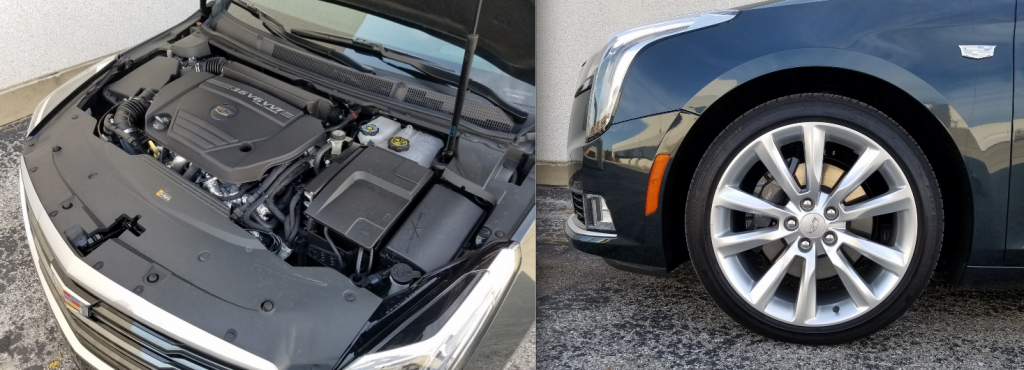
XTS has been around since 2013, absorbing gradual changes along the way. For 2018 it gets a mild facelift with LED headlights and taillights, a different decklid and rear bumper cover, chassis and front-seat revisions, more sound insulation (the car is very quiet), and an updated infotainment system.
V-Sport—available solely on the XTS Platinum in ’18—is the only way to get the twin-turbo LF3 3.6 V6. (All other XTSes have a 304-horsepower naturally aspirated version of this engine.) Other components of the package include AWD, a reconfigurable gauge cluster with a V-Sport theme, a specific grille, and unique 20-inch sterling-silver-painted alloy wheels.
There’s a lot of strength in the V-Sport engine, especially in highway operation, where it fosters serene cruising and easy passing. It seemed a little less stirring from a standstill in this tester’s estimation, however. The 6-speed automatic does serve the engine well with fairly quick, positive shifts. Snappy kickdown helps accomplish that easy highway acceleration. EPA fuel-economy estimates are 16 mpg in the city, 23 on the highway, and 18 combined. This reviewer saw 17.6 mpg after a 221-mile stint that included 65 percent city-type driving.
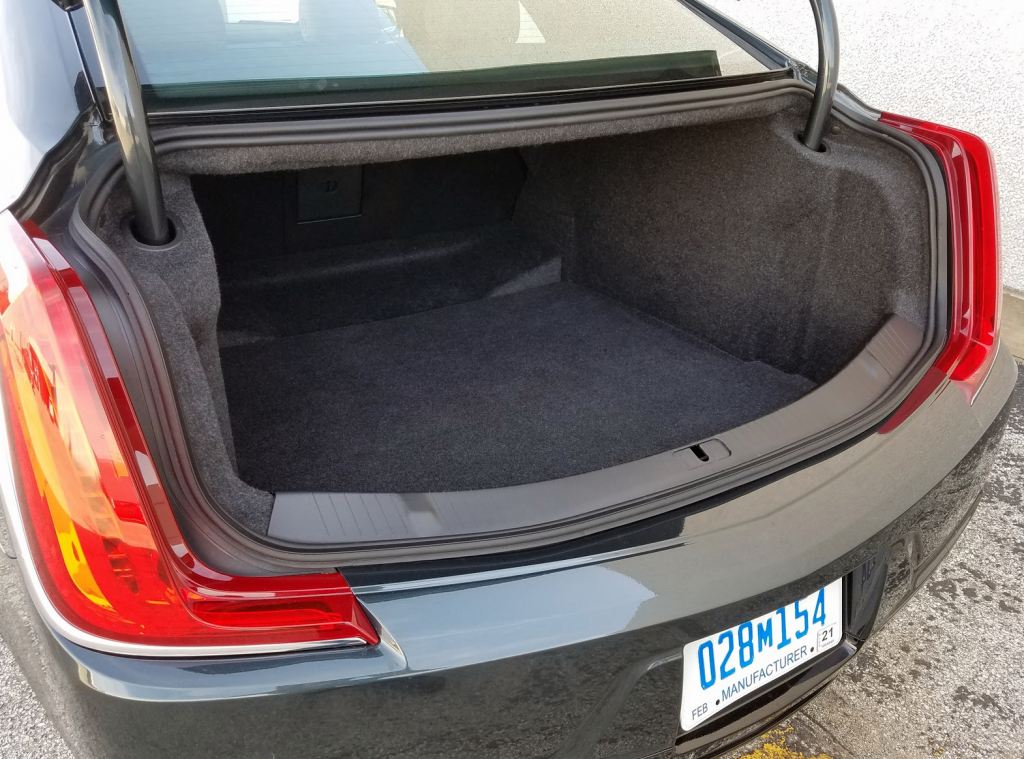
Premium Luxury- and Platinum-grade XTSes come with adaptable Magnetic Ride Control and rear air springs, which helped the test car ride very smoothly. It also handled pretty well for a larger car, with good steering response but maybe a little vibration through the wheel, too. The 4-wheel disc brakes, with Brembo-brand equipment in front, provided quick and confident stops. The XTS V-Sport is perhaps too big to be sport-sedan crisp dynamically, but it has the goods to be a fine tourer.
Luxurious and supportive seats are covered in semianiline leather. Rear outboard seats are heated, but the front buckets are heated, ventilated, adjustable 22 ways, and—for an added pampering touch—equipped with massagers. There’s excellent head- and legroom in either row, even under the panoramic sunroof, and sufficient seat and foot space fit a third adult in the middle of the back seat.
Other cabin equipment includes things like a heated steering wheel; power rear-window sunshade; and wood trim on the dash, console, and pull-down armrest in the rear seat. Passengers will encounter soft surfaces all over the dash and down the doors. Driver controls are dominated by a big, bright display of virtual gauges and driver information. The color head-up display remains visible to drivers wearing polarized sunglasses. If anything stands to make a driver uncomfortable it’s the controls for the CUE infotainment system. Even after several years with this system, it’s still difficult for users to be sure if they’re getting what they need on the first press of haptic controls for audio, navigation, climate, etc. All settings must be made through these contact points or by tapping on the 8-inch touchscreen.
2018 New York Auto Show: 2019 Cadillac CT6 V-Sport
Key convenience and technology features include Apple CarPlay and Android Auto smartphone compatibility, Bose surround-sound audio, satellite radio, trizone climate control, push-button starting, and adaptive cruise control. Electronic safety monitors are automatic forward and reverse braking, forward-collision alert, lane-departure warning, blind-zone alert, rear cross-traffic warning, and surround vision that displays on the touchscreen.
Cabin storage space gets a boost from a good-size glove box with an upper bin that’s handy for holding the owner’s manual. There’s also a modest covered console box, small forward bin with a power plug, pull-down dash bin to the left of the steering column, and covered cup holders in the console. Pockets in all four doors are on the small side. There are pouches on the backs of the front seats, and a shallow covered space and pop-out cup holders in the wood-accented rear armrest that also houses audio controls.
The flat-sided trunk is very big, and there is a little hidden space in the foam organizer around the compact spare tire, a $350 option that nudged the test car’s bottom-line price to $73,040. Unlike some larger cars that have fixed-position rear seats, those in the XTS retract in a 60/40 split. There’s a slight rise in the trunk floor as it approaches the seats, which rest just about flat, but there is little bulkhead obstruction at the trunk/interior threshold. Another handy touch is a pass-through hatch.
Even if you don’t go in for the biggest of big Cadillacs, you can still be living large with the XTS.
